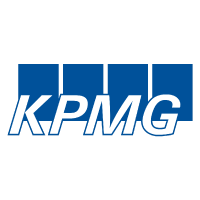Benefits strategies and policies to review for the coming year
As we navigate an era of evolving employee expectations, talent shortages, rising benefits costs, increased taxes and changing regulations, employers are facing growing pressure to adapt their benefits strategy and policies.
Employers must rethink their current offerings to stay competitive. This shift calls for strategic planning and transformation that has a significant bearing on how the benefits are designed, delivered and communicated.
Ones to watch:
Mitigating the rise in employers’ NI contributions
The government has increased employer NICs from 13.8% to 15% and reduced the threshold from £9,100 to £5,000 starting in April 2025 so UK employers will be hit with considerable increase in employee costs.
Consequently, any benefits that can derive an employer NI saving through salary sacrifice will be more attractive to employers
- Benefits such as cycle to work schemes, holiday purchase, green car schemes, and pensions salary sacrifice that are already popular and gaining even more interest as they reduce an employee's tax and NIC contributions while making scheme repayments. Since the salary sacrifice scheme repayment happens before NIC and tax calculations (gross level), employers pay less NIC throughout the scheme repayments.
- Managing this change effectively and clear communication can potentially increase the benefit take up and hence generate more savings.
- However, the salary sacrifice rules can be complex as it requires careful consideration and advice to implement or migrate from previous net pay arrangements. Once embedded in a compact way, it has a huge potential to drive engagement and increase benefit take up and overall savings.
Exploring cost-effective options to rising healthcare costs
Issues in the NHS have been well documented, this has led to a greater demand for private medical insurance, contributing to sharp increases in PMI premiums.
We are seeing a greater focus on the cost management measures, efficient access to the GP’s and proactive health offerings, prevention aiming and early intervention to avoid long-term healthcare burden.
- Use of excess on claims can be useful to manage financial risk for employers. Employers can offer an excess reimbursement option via a health care cash plan or an emergency fund.
- Digital health tools such as remote GP and virtual health screenings can also help manage health issues before they escalate.
- Rather than relying solely on traditional PMI, employers may explore partnerships with specific healthcare providers that offer more tailored approaches to employees. Providers that focus on specific areas such as mental health, Reproductive Health or Chronic Condition Management can offer highly specialised services based on workforce demographics, with scalable programs depending on employees demand.
Transforming financial wellbeing
- With the rise of inflation and economic uncertainty, we have seen an increased expectation on financial wellbeing and education. For example, coaching and budgeting tools to increase disposable income or customised advice. This benefit could help with employees’ short-term and long-term financial struggles.
Accessing and supporting diversity and inclusion
The evolving societal norms require employers to ensure that they adapt policies and terminology to embrace a broader understanding of employee’s situation.
- The traditional definition of ‘Family’ no longer accurately represents the spectrum of family structure. For example, same-sex couples, single parents, individuals who consider closer relatives or friends as their primary support system are increasing.
- To attract as diverse a workforce as possible employers’ benefits packages should be able to cater to the needs of different employees focusing on:
- Family friendly policies such as flexible carer time off, shared-parental leave, adoption leave, education support and pet insurance.
- Catering for different cultures through benefits like flexible bank holidays, celebration and religious time off.
- Employers should also consider providing flexibility for employees to designate dependents or beneficiaries based on personal circumstances as long as the usage is in line with the set policy. By using inclusive languages and management training, employers can prevent exclusion and increase employee trust. Consult with Legal, Tax and EDI Advisors to make sure policies comply with regulations and laws.
Communications that resonate and drive impact
- We often see employers making huge investments in setting up benefit packages and onboarding providers, but this is often undermined by poor communication
- A centralised and easy to use reward communication hub is important where employees can find all the information about their package. To really enhance this, try using segmented, targeted and tailored messages to employee groups based on their needs and demographics.
- In addition to a hub, clear communication through different channels, such as on-site benefits roadshow, online webinars and video logs will also significantly enhance the experience and drive benefits usage
- Driving employee engagement outside of the flex window, such as creating multiple touchpoints throughout the year by having wellbeing calendar of events. Work with providers to design communication, ensure employees are informed about resources available to them.
Easy to access, use and intuitive technology
- By implementing a benefits platform that streamlines administration and allows personalisation, it will help employers create a powerful tool that consolidates all aspects of flexible benefits, rewards, recognition, discounts, pensions and polices in one place.
- Advanced features such as dynamic total reward statements, salary/bonus calculator and digitised letter generation are likely to improve employee experience and engage employees even more.
- Since employees’ expectations of flexibility and choice in benefits have increased, employers can leverage technology for offering personalised benefits packages. They can implement flexible benefits platforms that allow employees to customise their benefits according to individual needs and preferences. This is especially important as one-size-fits-all approach no longer aligns with diverse needs of modern workforce.
Top 5 tips on your future benefits strategy
- When was the last time you reviewed your benefit offering? Are you aware of what benefits that your workforce might value?
- Are your benefit programmes and policies fit for purpose, and do they cater to a multi-generational, diverse workforce?
- How can you leverage savings from increased employer NIC contributions through a salary sacrifice schemes and relevant benefits?
- Revisit your platforms, providers and target operating model to optimise solutions
- Are you communicating your total reward package effectively? Revamping your comms can be as effective as revamping your benefits package
Supplied by REBA Associate Member, KPMG LLP
KPMG total reward and benefits solutions cover: Assessment, Design ,Compliance, Legal and Technology








